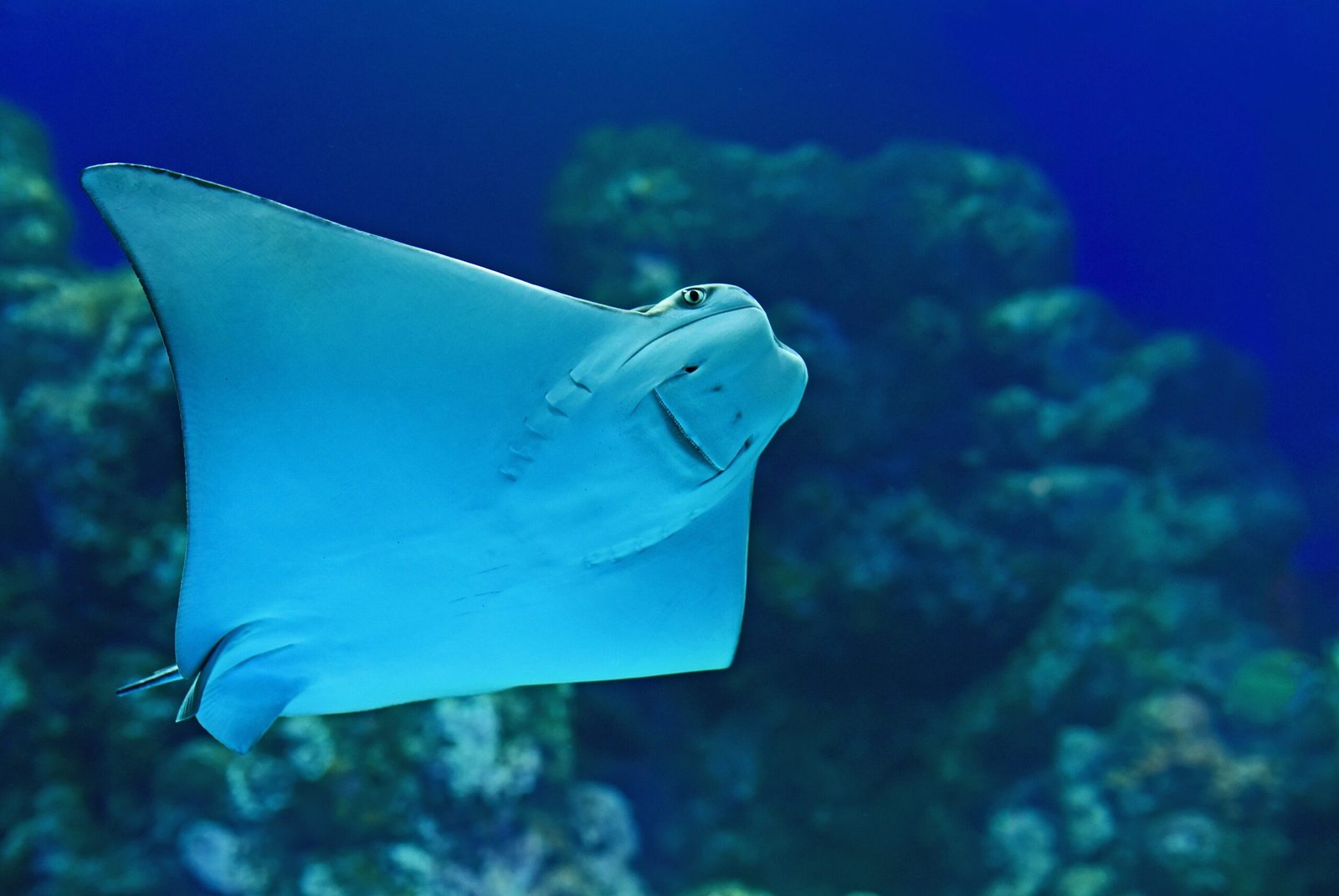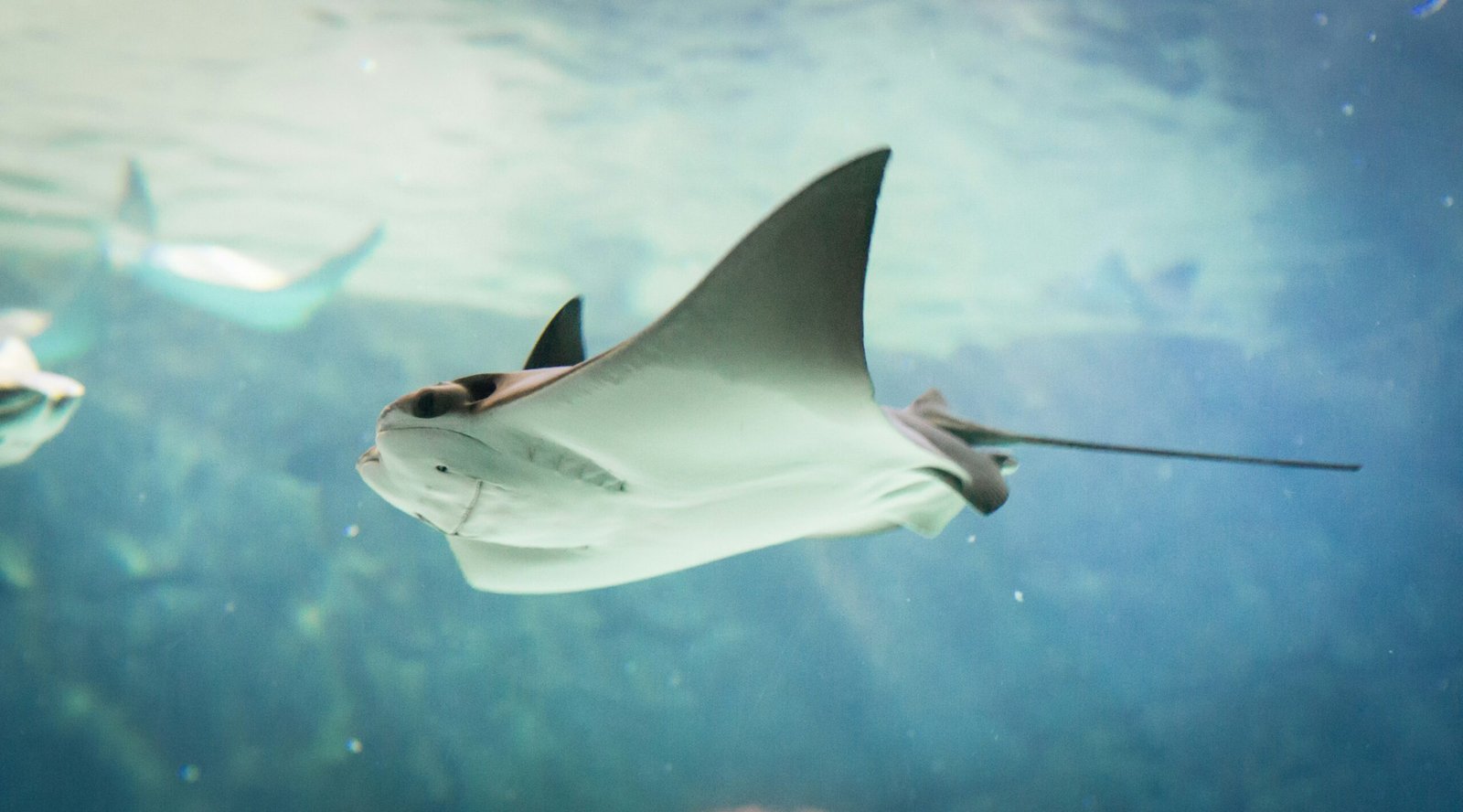Stingray’s Mysterious Pregnancy

A pregnant female stingray was discovered at an aquatic center in North Carolina, despite the absence of any male stingrays in her tank. The staff at the center speculate that Charlotte, the stingray, may have been impregnated by a male shark that was introduced into her tank back in July.
Charlotte, the stingray residing at the aquarium and shark lab in Hendersonville, North Carolina, is currently anticipating the arrival of her offspring. Surprisingly, the staff at the facility suspect that she may have been impregnated by a shark, despite the absence of any male stingrays in her tank. The experts at the Aquarium and Shark Lab by Team ECCO initially observed swelling in Charlotte’s abdomen back in September, which led them to believe it could be a sign of cancer.
On February 1, staff member Ramer revealed that they had been conducting ultrasounds on Charlotte, their ray, since September. The team noticed several internal “growths” and initially suspected that she had cancer. However, upon further examination, they discovered that Charlotte was actually pregnant with multiple pups.
There are two potential reasons behind the enigmatic impregnation – the initial one being a phenomenon called ‘parthenogenesis.’
Parthenogenesis refers to the development of eggs without fertilization, resulting in the creation of an identical copy of the mother.
According to Ramer, she contacted Dr. Rob Jones, the veterinarian at the aquarium, who confirmed that the growths were indeed eggs. Ramer further mentioned that they do not have a male ray, and Dr. Jones informed her about the rare occurrences of parthenogenesis in rays.
As for the second explanation for Charlotte’s pregnancy, it can only be described as bizarre.

“Intriguing Interactions: The Unlikely Union of Sharks and Stingrays Unveils a Marine Mystery
In a captivating turn of events at an aquatic facility, the story unfolds with the potential impregnation of a female stingray by one of two one-year-old sharks introduced to her tank in mid-July. The unsuspected twist in this marine tale began when, according to Ramer, two 1-year-old white spot bamboo males (sharks) were relocated to the tank. The lack of precise information about their maturation rate initially led the staff to believe that no issues would arise from this cohabitation.
However, the first signs of an unexpected development manifested in the form of bite marks on Charlotte, the female stingray. Initially attributing the marks to other fish, the staff decided to relocate them, hoping to curb the unusual behavior. To their surprise, the biting persisted, prompting a deeper investigation into the dynamics of the tank.
It was during this examination that the enigma unfolded—bite marks on Charlotte’s fin edges were identified as a sign of mating in sharks, as explained by a knowledgeable staff member. This revelation added a layer of complexity to the situation, raising questions about the maturation rates and behaviors of the introduced sharks. The unexpected union between these distinct marine species has now become a captivating subject of study, leaving marine biologists and enthusiasts alike eagerly awaiting the unfolding chapters of this unforeseen marine saga.”
Charlotte is currently pregnant with up to four pups and it was anticipated that she would give birth around February 9. However, as of today (February 10), the birth has not yet occurred.
Once the pups are born, DNA testing will be conducted to determine whether they are a mixed breed or clones of their mother. The aquarium staff will be responsible for carrying out this testing.
Typically, the gestation period for a stingray lasts between three to four months. These creatures are flat fish that share a close relation to sharks. They all fall under the category of fish known as Elasmobranchs.
Stingrays possess a distinctive characteristic of lacking bones in their body structure, as their skeleton is composed of flexible cartilage.
These creatures are ovoviviparous, which signifies that the offspring are hatched from eggs retained within the body.
Numerous stingrays prefer a solitary lifestyle and only gather for the purposes of breeding and migration.
